Beginning Our Business Importing Antiques from France
Brocante and déballage and vide-grenier, oh my ... welcome to Piggy Kitchen!
How did our business get started? It’s the question we get asked most often, and probably why many of you are tuning in. To share with you all we’ve learned in the past 26 years is to revisit the origin story of Piggy Kitchen … as you’ll discover, we had a crash course in building a new business in real-time.
The backstory
In the almost twenty years leading up to late 2019, antique French copper and glassware were merely things we collected for ourselves on our many, many trips to the Paris flea market in St. Ouen. Over time, all that casual antique collecting — a sauté pan here, a gratin there — lead to an interest in making French food, which lead to hosting what would become a weekly dinner for various friends at our home in upstate New York. Over those lovely meals, served with a flourish in copper pans, antique porcelain dishes and fin-de-siecle glassware, many of our guests caught the French cookware bug too, and asked us to look out for a specific piece or two on our next trip.
Our first trip to France as Piggy Kitchen
While we had loosely established our business — Piggy Kitchen — in early 2019, the real work began quite by chance on our first trip to Bordeaux. On a rainy late November afternoon that year, while looking for a place to park our rented car, we passed a large public park ringed by Plane trees called the Place des Quinconces where a huge antique flea market was in full swing … we had stumbled upon what the locals called a brocante.
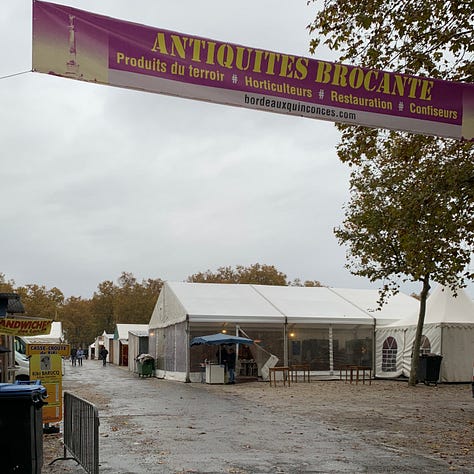
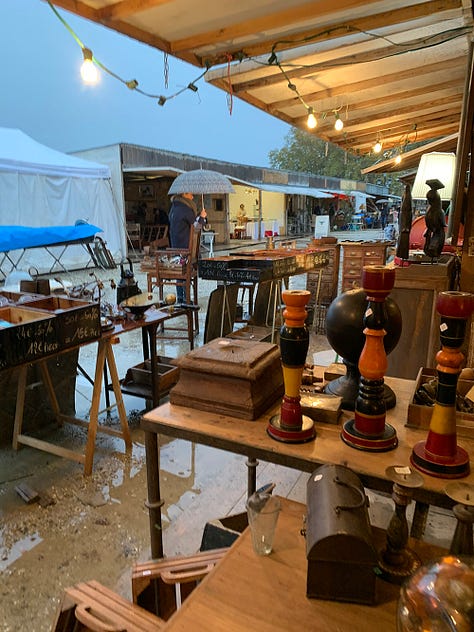
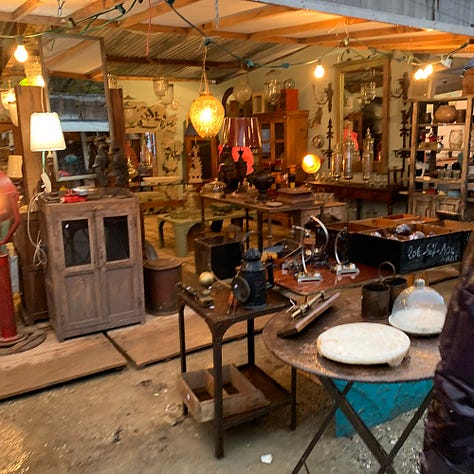
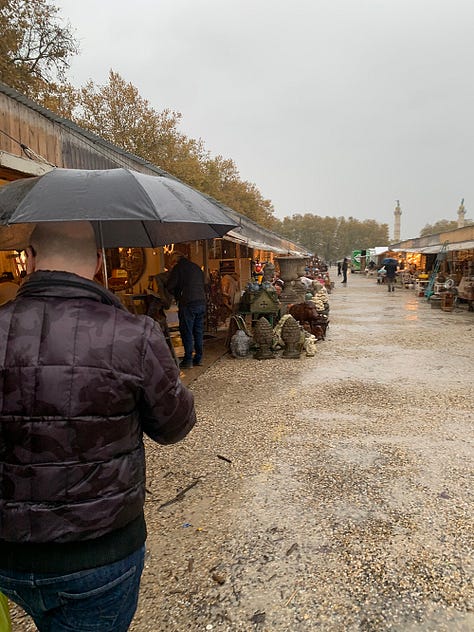
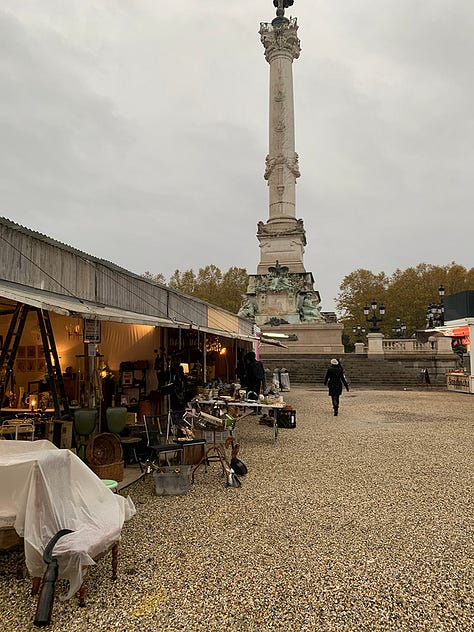
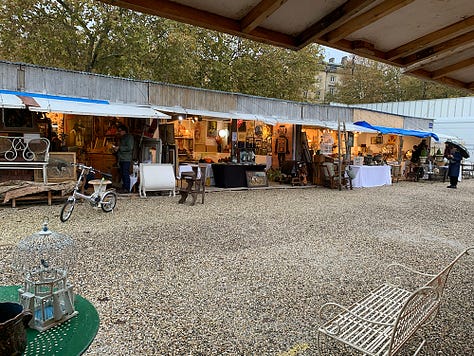
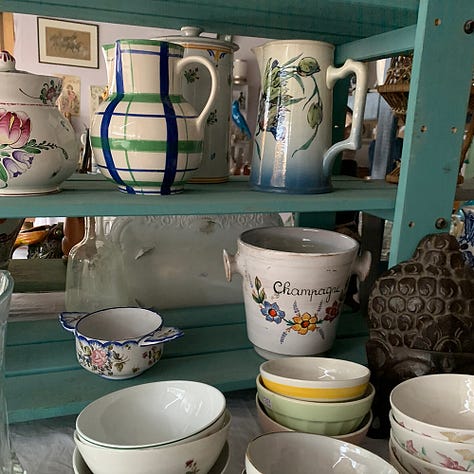
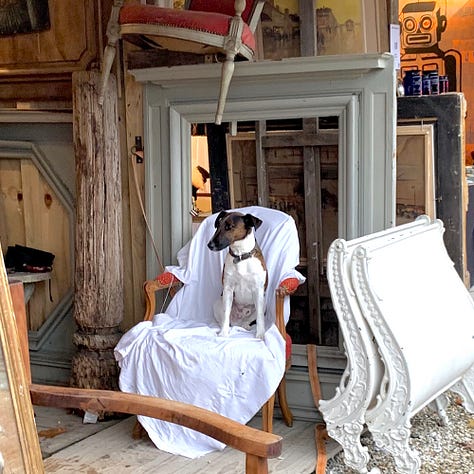
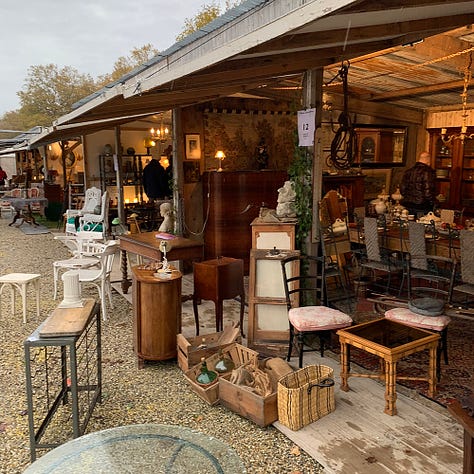
There were beautiful things in every direction, abundantly displayed in separate well-lit booths, each like a little shop. Most spaces seemed to specialize in a particular genre: One featured architectural elements, another sold only iron garden furniture, and still another 19th-century crockery and table service. Ducking out of the rain and into a display, one could deep dive into sets of glassware, latté bowls, even light fixtures … name it and “it” was represented in some fashion.
We walked around the market in the continuing drizzle, looking at it all with increasing excitement and wondering aloud: Could we make a real business … right now … out of what had only been a hobby?
It was Richard who asked the hard questions: How plentiful were these markets? How to find others? How to get it all back to the states? That last question was the biggie. Up until that point everything we’d found came home in checked luggage. This first buy would be about volume, and we had no clue how it might be shipped back to the States.
In a moment of je m’en fous-ism … “I don’t care” … about all that was unanswered, we decided we’d either figure out the details during the trip, or leave a pile of antiques on the side of a road somewhere. We hoped for the best and jumped in with both feet.
That rainy afternoon saw us filling the hatchback of our rented car with copper pans, glassware, cutting boards, and porcelain serving platters. Later that day, I took a local train to an art supply store outside of town to buy bubble wrap and tape. We were on our way.
That November day was only the beginning of what we were to discover on our month-long trip throughout France. It seemed everywhere we turned was another market or shop: While still in Bordeaux, we found the famous weekly market Puces de St. Michel. Heading into the countryside just a few days later, we found a very large store outside of Libourne, where stacks … stacks … of antique carved marble sinks were waiting to be bought. In almost every town or city we passed on that trip, there was at least one brocante seemingly tailor-made for us. Copper cookware, glorious sets of dishes and glassware, a rare Dehillerin stockpot from the 1880s, an ancient black marble mortar … all purchased, bubble wrapped, and packed into a quickly filling hatchback.
The bug had bitten us hard.




